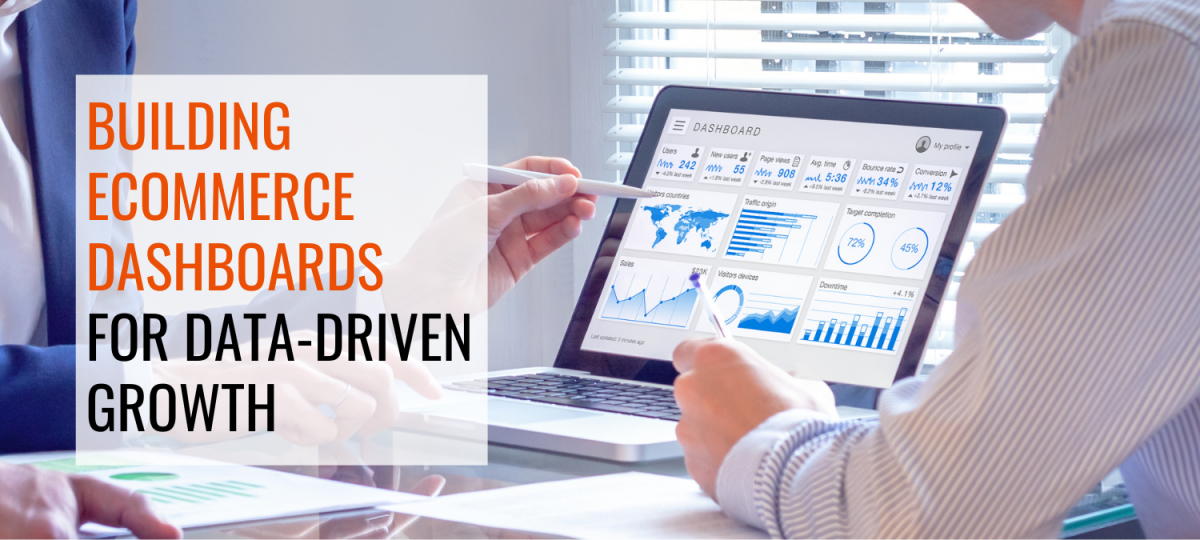We always talk about how important data is for businesses. But data often comes from multiple sources, leading to difficulties in managing everything in one place. It gets even tougher if you have both online and offline data sources.
But in order to stay competitive, your data needs to be organized and displayed in a way that’s usable for you and your team. That’s where dashboards come in.
In business, a dashboard is a tool that helps companies visualize and make more sense of raw data. You can see all the relevant business information from a single point of access. It keeps track of your company and teams’ key performance indicators (KPIs) and uses artificial intelligence (AI) to help you better understand your company’s current and past performance, allowing you to make better decisions for the future.
With companies being more and more data-driven, departmental dashboards have been gaining popularity across different sectors to help them gain actionable insights and improve efficiency.
The great news is that, today, you don’t need to be a huge organization to benefit from or have access to efficient and well-organized dashboards. In this article, we’ll be talking about creating dashboards that help businesses of all sizes set goals, identify issues in their organization, and achieve their most important KPIs.
Data matters a great deal for anyone who is trying to run, and scale, an online business. In this article, I’ve reached out to the team at Praxis Metrics, a platform that is designed to help ecommerce sellers make sense of often-confusing data. See what goes into building a first-rate departmental dashboard that makes use of valuable data and gives you the insight that you need to make powerful marketing decisions.
What is a Good Dashboard? Actionable Departmental Dashboards
First things first, for a dashboard to be effective, it has to be actionable.
Information intelligence expert and Praxis CEO Meaghan Connell says, “The first key to an actionable departmental dashboard is understanding that data itself will never solve any problems for you; because data is only singular events and outcomes. In order for your dashboards to be actionable, they need to make it easy for users to know what to do next.”
Building dashboards may be more accessible than ever, but don’t dive in without proper preparation. Connell shares some best practices:
- When building dashboards, start by setting goals. Next, figure out what are your most important business questions. The answers to your business questions will be your KPIs. By tying each metric to a specific goal, each data point becomes actionable.
- Do metrics mapping and prioritize leading indicators (metrics that you can control) rather than lagging indicators (the result of your efforts). For example, for an ecommerce business, a leading indicator is the number of email newsletters your marketing team sends in a month, and the lagging indicator will be sales.
- “The further the dashboard is from the person performing the action, the more appropriate lagging indicators are, as they are more likely interested in the results than the legwork required to achieve the result,” Praxis shares. A good example of this is when an executive team prioritizes results and bottom lines first before drilling down into detailed information on the sales team’s efforts.
(Source: Praxis)
- Prioritize and rank your KPIs according to business value. Remember that only a small part of your efforts bring in the vast majority of results. Praxis recommends asking: “How much impact will this have to the organization if we get the answer? The higher ones get prioritized first.” Keep only the most important KPIs.
- Watch out for outliers and set up alerts for data that greatly deviates from the average.
What Are the Three Types of Dashboards?
There are a few different types of dashboards according to their use:
- Strategic dashboards focus on long-term strategies and high-level key metrics. It has an enterprise-wide impact on a business and is mainly used by senior-level decision-makers.
- Operational dashboards are some of the most commonly used dashboards. They show shorter time frames and are used to monitor and analyze a company’s activities in a given business area. These dashboards are also focused on giving alerts about any deviations and are based on real-time data.
- Analytical dashboards contain vast amounts of data created by analysts and data scientists. It relies on historical data usage then identifies trends and compares them to multiple variables to create projections and targets. It’s best used when there is a massive amount of complex data that needs visualization.
Get our GN - Building Ecommerce Dashboards for Data-Driven Growth delivered right to your inbox.
Important Key Metrics and Data Points to Look For When Creating Dashboards
Departmental dashboards serve as guides for teams to optimize their performance. However, there is such a thing as too much data when building dashboards.
Not only is irrelevant data overwhelming to look at, but it also distracts from important information. Weed out irrelevant data points and stick only to the ones that matter for each team.
Here are some of the most important data and metrics per department:
For Ecommerce Team Dashboards
An ecommerce team can have several members performing different functions. To optimize an ecommerce team’s performance, set key metrics based on their roles. This includes:
- Website engagement metrics such as time spent on your website, clicks, conversions, and newsletter subscriptions.
- Data on the customer journey, like traffic sources, mode of payment, delivery method, use of customer support.
- Customer AOV data like product purchase rates, traffic sources per product, checkout drop-off rates, and upsell and cross-sell data.
- LTV data such as repurchase rates and timelines, email and newsletter content and KPIs, loyalty program data, and referral data.
- Product metrics related to product popularity and usage and best-selling stock-keeping units (SKUs).
Here’s a great example of an ecommerce dashboard from Praxis that shows customer profiles, sources, and other crucial LTV and AOV data:
(Source: Praxis)
(Source: Praxis)
For Finance Team Dashboards
Finance teams are used to working and leveraging data. The most common numbers they look for are pretty straightforward figures like revenue projection, sales forecasting, and cash flow. But for truly actionable dashboards, you need to dive deeper into what’s affecting the company’s financial performance.
- For accurate cash flow projections, you’ll want to look at customer lifetime value (LTV).
- To create sales and marketing budgets, factor in return on ad spend (ROAS) and customer acquisition cost (CAC).
- They’ll also need access to other costs you incur while running the business, and that includes your manpower. Include HR data like employee ROI and monthly benefit costs per employee.
Finance teams can use data that other teams also use. However, this data is used differently. While other departments use these data to optimize their own activities, the finance team’s goal is to optimize the entire organization. Here’s an example of what a finance team’s dashboard looks like:
(Source: Data Pine)
For Marketing Team Dashboards
Successful marketing teams communicate the value of your company and products to your target audience in order to generate high-quality leads, acquire new customers, and grow revenue.
To do this, they need a lot of information from reliable data sources. That includes customer, product, and financial data. Attracting and keeping customers are two of the most important roles of marketing teams, so tie it to relevant KPIs like conversion rates, spend metrics, and retention rates. This needs to be broken down further by looking into conversion and retention rates by source and per product.
They also need to have data on:
- Cost of Goods (COGS) and profit margins so that they can limit how much they can spend on a campaign
- LTV and AOV so that they can target your company’s best customers
- Highest converting channels and traffic sources
- Product, SKUs, and product bundle performance
- ROAS and CAC to determine which marketing campaigns bring the best value for money
Here’s another example of a dashboard from Praxis that shows actionable insights for marketing teams:
(Source: Praxis)
(Source: Praxis)
For Product Team Dashboards
With the right data and metrics, you can create an actionable dashboard that helps your product team create or find products that customers love. Look at important metrics like product purchase rates and repurchase rates. Dive deep into which features customers use and which ones they don’t. Another thing to look into is customer feedback data. Your product team can use these findings when planning for your next launch and when restocking your inventory.
The Next Steps – How Do I Create a Dashboard?
If you feel that a digital dashboard is something that could help your business grow, here are some of the next steps you can take when planning your dashboard strategy:
Step One: Choose Standardized Charts and Layouts
When you have several departmental dashboards, having a uniform layout and clean user interface makes it easier for everyone in the company to understand the visualizations of each chart. Choosing the right chart type to represent your data is crucial too. You can use a pie chart, bar chart, or line chart, as long as it helps you easily visualize and convey the message of the data.
Step Two: Use Interactive Dashboards
An interactive dashboard allows users to look deeper into the data sets by drilling down and filtering through more detail and information. Some dashboards can also include real-time data, which is a great way to always stay updated and on top of changes.
Step Three: Give Context to Your Numbers and Charts
When a viewer sees a number on the dashboard, how would they know if it’s good or bad? A good dashboard provides context by indicating if a metric meets or is below a certain threshold. Add context by including past data for comparison, targets or projections for reference, or color-coding values that are below or above the norm.
Data strategy shouldn’t be intimidating or difficult to understand. If you want to leverage your data to grow your ecommerce business, sign up now for a free data strategy session and free data roadmap from Praxis.
If you need help finding the best marketing strategies to scale your business, reach out today for a free 20-minute consultation. Let’s look at solutions that will take your ecommerce business to the next level.
Get our GN - Building Ecommerce Dashboards for Data-Driven Growth delivered right to your inbox.






